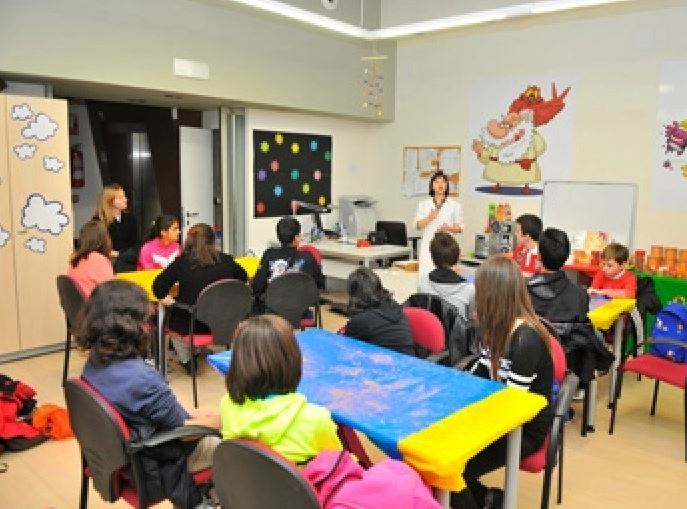Color theory workshop: Coloring yourself

With this workshop, our aim is to immerse students in the world of color and light playfully and experimentally. On one hand, from a scientific perspective, we’ll delve into the most important theories from both artists and scientists. On the other hand, from an empirical standpoint, we’ll conduct experiments based on these theories and observe how artists have put them into practice, always tailored to the corresponding educational levels. This way, we’ll bring together various disciplines—chemistry, physics, and art—into a single activity.
For the pre-school level:
Immersed in a world brimming with magic and fantasy and guided by the three principles of learning (creative, active, and participatory), we’ll initiate young students into the realm of Color Theory.
Firstly, we’ll introduce the youngest ones to primary and secondary colors through a puppetry representation.
Next, using worksheets as a tool, children will engage in mixing primary colors to produce secondary ones. Additionally, they’ll discern between warm and cool colors in everyday objects.
To conclude, each child will craft a simple object to deepen their understanding of the world of color.
Elementary school level.
By fostering a trusting environment where discovery is a central axis, empowering students to become the protagonists of their own learning, we will come to grasp the significance of color in visual and artistic language.
Initially, we’ll spotlight renowned physicists and artists as the focal point of the activity. Through them, and via small-scale experiments, we’ll delve into Color Theory and the phenomenon of light.
To conclude the activity, each student will create a simple object that ignites fascination and stimulates creativity. This workshop comprises two levels (Primary I and Primary II), distinguished by the object being crafted.
Secondary school level
By fostering a trusting environment where discovery is a central axis, empowering students to become the protagonists of their own learning, we will come to grasp the significance of color in visual and artistic language.
Initially, we’ll spotlight renowned physicists and artists as the focal point of the activity. Through them, and via small-scale experiments, we’ll delve into Color Theory and the phenomenon of light.
To conclude the activity, we will explore the effects of light and its chromatic derivations through techniques utilized by specific pictorial currents.
